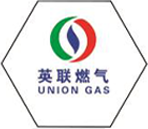
Nov . 19, 2024 23:06
Back to list
natural gas pressure reducing station
Understanding Natural Gas Pressure Reducing Stations
Natural gas is a crucial energy source in today’s world, powering homes, industries, and vehicles. However, it is essential to manage its pressure effectively during transportation and distribution to ensure safety, efficiency, and reliability. This is where natural gas pressure reducing stations (PRSs) come into play.
A natural gas pressure reducing station is an essential component of the natural gas distribution network. Its primary function is to reduce high-pressure gas from transmission pipelines to lower, usable pressures suitable for residential and commercial applications. Typically, natural gas is transported in large pipelines under high pressure (often exceeding 1,000 psi). Before it reaches end-users, it must be reduced to about 2 to 100 psi, depending on the specific requirements of the consumers.
PRSs are strategically located at various points within the distribution network. They consist of several key components, including pressure regulators, filters, and measurement devices. The pressure regulator is the heart of the station, functioning to control the flow and maintain a consistent pressure regardless of fluctuations in upstream supply. The filters play a critical role in removing impurities and particulates from the gas, ensuring that it remains clean and safe for use.
natural gas pressure reducing station

One of the critical aspects of PRSs is safety. High-pressure natural gas can pose significant hazards if not handled correctly. Therefore, each pressure reducing station is equipped with safety devices, such as relief valves that prevent overpressure situations. These systems automatically release gas if the pressure exceeds a predetermined level, thus protecting the infrastructure and preventing potential accidents.
Apart from safety, efficiency is another significant consideration. Modern PRSs often utilize advanced technologies such as Supervisory Control and Data Acquisition (SCADA) systems. These systems enable real-time monitoring and control of gas flow and pressure, allowing for immediate adjustments and ensuring that the supply meets the varying demands of consumers throughout the day.
Furthermore, pressure reducing stations play a vital role in maintaining the integrity of the natural gas supply chain. By ensuring the proper pressure levels are maintained, they help optimize the performance of gas appliances and systems, reduce energy consumption, and minimize greenhouse gas emissions.
In conclusion, natural gas pressure reducing stations are indispensable to the distribution of natural gas. They enhance safety, efficiency, and reliability within the network. As the demand for natural gas continues to grow, the role of PRSs will remain critical in ensuring that this vital energy source is delivered safely and effectively to millions of users worldwide.
Latest news
-
Safety Valve Spring-Loaded Design Overpressure ProtectionNewsJul.25,2025
-
Precision Voltage Regulator AC5 Accuracy Grade PerformanceNewsJul.25,2025
-
Natural Gas Pressure Regulating Skid Industrial Pipeline ApplicationsNewsJul.25,2025
-
Natural Gas Filter Stainless Steel Mesh Element DesignNewsJul.25,2025
-
Gas Pressure Regulator Valve Direct-Acting Spring-Loaded DesignNewsJul.25,2025
-
Decompression Equipment Multi-Stage Heat Exchange System DesignNewsJul.25,2025

